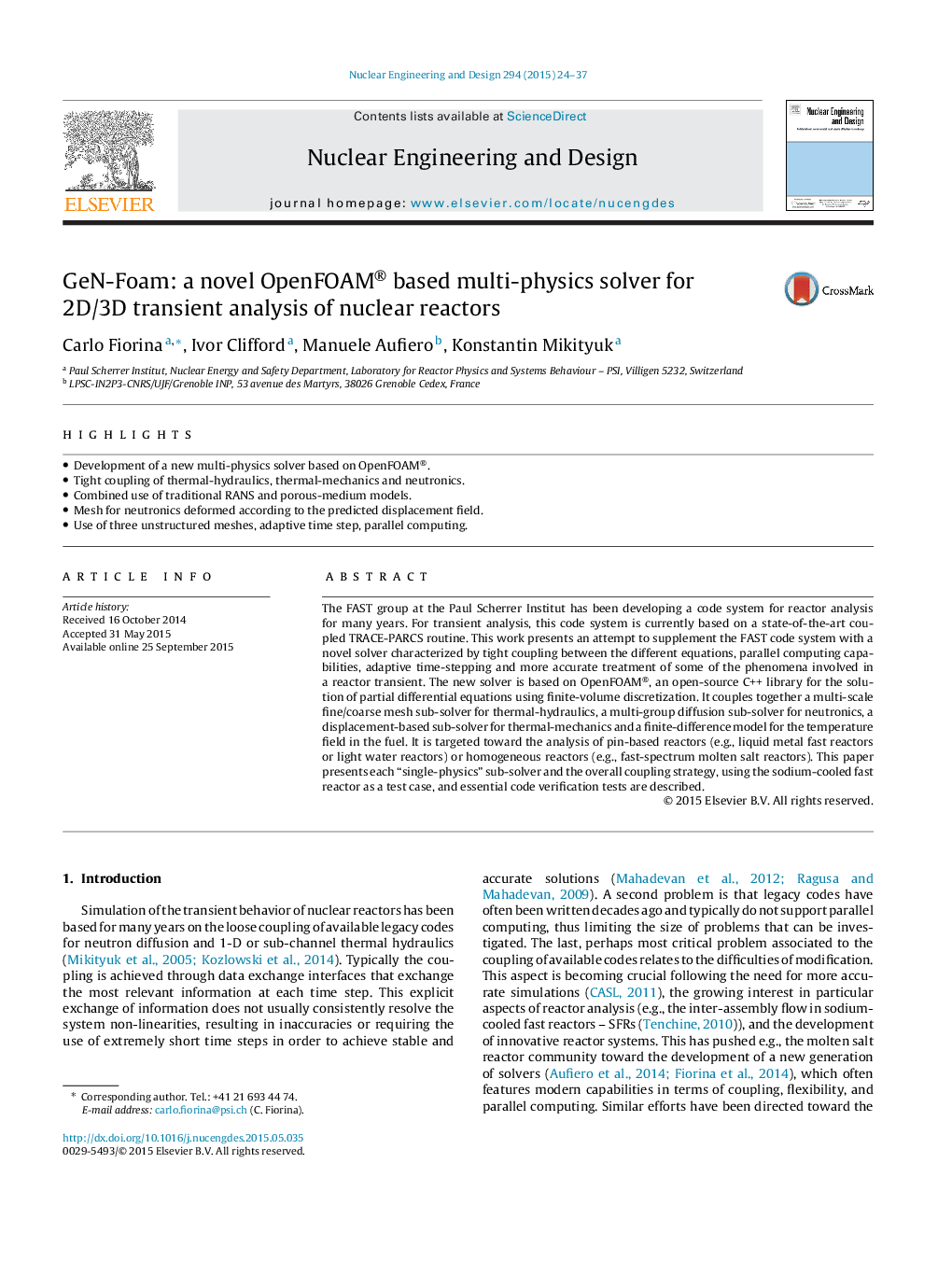| Article ID | Journal | Published Year | Pages | File Type |
|---|---|---|---|---|
| 296039 | Nuclear Engineering and Design | 2015 | 14 Pages |
•Development of a new multi-physics solver based on OpenFOAM®.•Tight coupling of thermal-hydraulics, thermal-mechanics and neutronics.•Combined use of traditional RANS and porous-medium models.•Mesh for neutronics deformed according to the predicted displacement field.•Use of three unstructured meshes, adaptive time step, parallel computing.
The FAST group at the Paul Scherrer Institut has been developing a code system for reactor analysis for many years. For transient analysis, this code system is currently based on a state-of-the-art coupled TRACE-PARCS routine. This work presents an attempt to supplement the FAST code system with a novel solver characterized by tight coupling between the different equations, parallel computing capabilities, adaptive time-stepping and more accurate treatment of some of the phenomena involved in a reactor transient. The new solver is based on OpenFOAM®, an open-source C++ library for the solution of partial differential equations using finite-volume discretization. It couples together a multi-scale fine/coarse mesh sub-solver for thermal-hydraulics, a multi-group diffusion sub-solver for neutronics, a displacement-based sub-solver for thermal-mechanics and a finite-difference model for the temperature field in the fuel. It is targeted toward the analysis of pin-based reactors (e.g., liquid metal fast reactors or light water reactors) or homogeneous reactors (e.g., fast-spectrum molten salt reactors). This paper presents each “single-physics” sub-solver and the overall coupling strategy, using the sodium-cooled fast reactor as a test case, and essential code verification tests are described.
